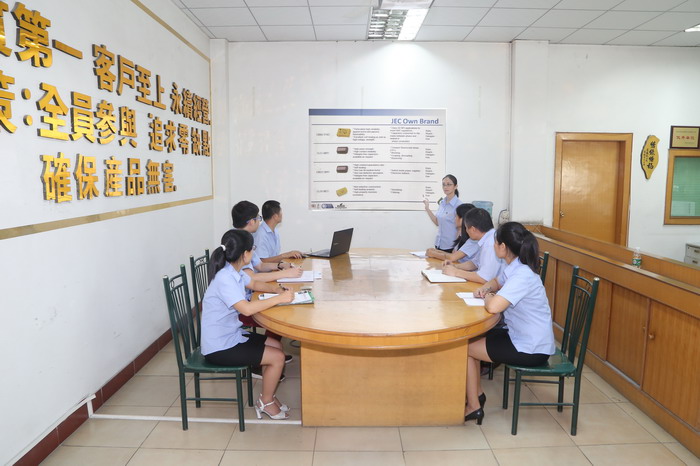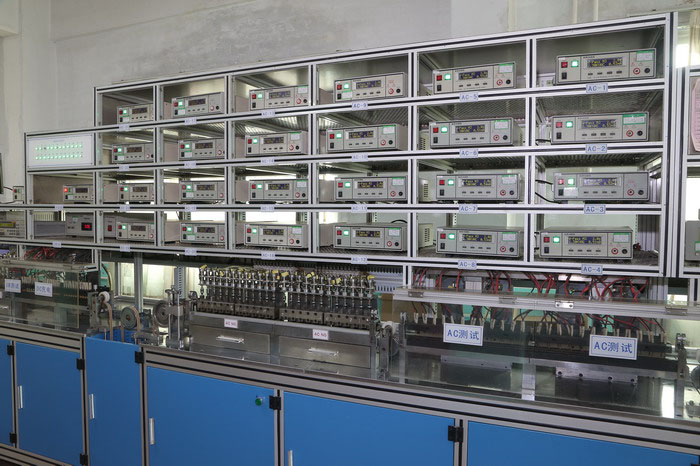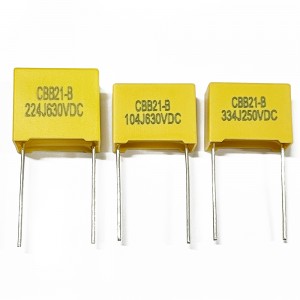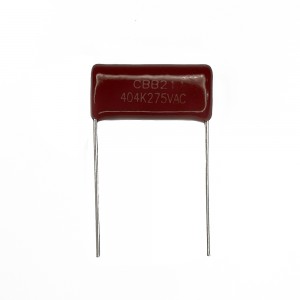Button Type Super Capacitor

| Types | Rated voltage | Nominal capacity | Internal resistance | V type | H type | C type | ||||||
| (V) | (F) | (mΩ @1kHz) | øD | H | P | øD | H | P | øD | H | P | |
| Button Type | 5.5 | 0.1 | ≤65 | 9.5 | 14.1 | 4.5 | 9.5 | 8.6 | 10 | 13 | 13 | 5 |
| 5.5 | 0.1 | ≤50 | 11.5 | 16.5 | 4.5 | 11.5 | 8.6 | 10 | 13 | 13 | 5 | |
| 5.5 | 0.22 | ≤65 | 9.5 | 14.1 | 4.5 | 9.5 | 8.6 | 10 | 13 | 13 | 5 | |
| 5.5 | 0.22 | ≤50 | 11.5 | 16.5 | 4.5 | 11.5 | 8.6 | 10 | 13 | 13 | 5 | |
| 5.5 | 0.33 | ≤65 | 9.5 | 14.1 | 4.5 | 9.5 | 8.6 | 10 | 13 | 13 | 5 | |
| 5.5 | 0.33 | ≤50 | 11.5 | 16.5 | 4.5 | 11.5 | 8.6 | 10 | 13 | 13 | 5 | |
| 5.5 | 0.47 | ≤50(C Type≤30) | 11.5 | 16.5 | 4.5 | 11.5 | 8.6 | 10 | 20.5 | 12.5 | 5 | |
| 5.5 | 0.47 | ≤50(C Type≤30) | 12.5 | 17.5 | 4.5 | 12.5 | 8.6 | 10 | 20.5 | 12.5 | 5 | |
| 5.5 | 0.68 | ≤30 | 16 | 20 | 4.5 | 16 | 9.2 | 16 | 20.5 | 12.5 | 5 | |
| 5.5 | 1 | ≤20 | 19 | 23 | 4.5 | 19 | 9.2 | 19 | 20.5 | 12.5 | 5 | |
| 5.5 | 1.5 | ≤20 | 19 | 23 | 4.5 | 19 | 9.2 | 19 | 20.5 | 12.5 | 5 | |
| 5.5 | 4 | ≤16 | 25 | 29 | 6 | 25 | 9 | 25 | ||||
Performance Characteristics:
1. The charging speed is fast, and the rated capacitance can be reached within 30 seconds of charging
2. Long cycle life, up to 500,000 times of use, and the conversion life is close to 30 years
3. Strong discharge capacity, high efficiency and low loss
4. Low power density
5. All production materials comply with RoHS
6. Simple operation and maintenance-free
7. Good temperature characteristics, can work at -40℃ as low as possible
8. Convenient testing
9. Acceptable as super capacitor module


Super Capacitor Button Type Application
Typical applications: RAM, consumer electronics, wind turbine pitch, military industry, smart grid, backup power supply, toys, etc.

Advance Workshop
We not only possess a number of automated production machines and automated testing machines but also have our own laboratory to test the performance and reliability of our products.
Certifications

Certification
JEC factories have passed ISO9001 and ISO14001 management certification. JEC products strictly implement GB standards and IEC standards. JEC safety capacitors and varistors have passed multiple authoritative certifications including CQC, VDE, CUL, KC , ENEC and CB. JEC electronic components comply with ROHS, REACH\SVHC, halogen and other environmental protection directives, and meet the EU environmental protection requirements.
About Us

The founder of the company has been engaged in capacitor research and development and circuit design for more than 20 years. The company has implemented a new concept of nanny service in the industry, freely assisting customers in circuit research and development, capacitor customization selection, customer circuit optimization and upgrading, product application abnormal problem analysis, and provides our clients with a new model of unique and considerate services.









1. What is an electric double-layer capacitor?
Super capacitor is also called electric double layer capacitor. It consists of two plates, and an electric field is generated between the two plates.
Its main advantage is fast charging and discharging, and has a very large capacitance (usually within the Farad range), so it can be used in electric vehicles such as Tesla cars because of its performance speed and so on.
2. What is the use of electric double layer capacitors?
Electric double layer capacitors (EDLC) are widely used. They can be used as a power balance power supply for lifting devices, which can provide super-large current power; they ca be use as a vehicle starting power source, because their starting efficiency and reliability are higher than traditional batteries, and they can fully or partially replace traditional batteries; they ca be used as a traction energy source for vehicles; they can be used in the military to ensure the smooth start of tanks, armored vehicles and other tanks (especially in the cold winter), as a pulse energy for laser weapons. In addition, they can also be used as energy storage energy for other electromechanical equipment.
3. What is an electric double-layer capacitor?
Electric Double-layer Capacitor is a kind of supercapacitors, which is a new type of energy storage device.
The electric double-layer capacitor is between the battery and the capacitor, and its extremely large capacity can be used as a battery.
Compared with batteries using electrochemical principles, electric double-layer capacitors do not involve material changes at all in the charging and discharging process, so they have the characteristics of short charging time, long service life, good temperature characteristics, energy saving and environmental protection.
Electric double layer capacitors have extremely small electric double layer spacing, resulting in weak withstand voltage, generally not exceeding 20V, so they are usually used as energy storage elements in low-voltage DC or low-frequency applications.
4. What are the advantages and disadvantages of super capacitors?
Compared with traditional batteries, supercapacitors have many advantages: fast charging speed, which can be charged to more than 95% of its rated capacity in 10 seconds to 10 minutes; power density can reach as high as (102~104) W/kg, which is 10 times that of lithium batteries. It has a high discharge capacity of high current; it can be used for 100,000 to 500,000 cycles and has a long service life; it has a high safety factor and is maintenance-free for long-term use. However, compared with mainstream sulfur batteries, it still faces the disadvantages of high cost and low energy density.
5. What is a super capacitor?
Supercapacitors can also be called large-capacity capacitors, energy storage capacitors, gold capacitors, electric double layer capacitors or farad capacitors. They mainly rely on electric double layers and redox pseudocapacitors to store electrical energy. There is no chemical reaction in the energy storage process so this energy storage process is reversible, and it is precisely because of this the supercapacitor can be repeatedly charged and discharged hundreds of thousands of times.
6. Why is supercapacitor an upgrade of traditional capacitors?
Flat capacitors are composed of two metal electrode plates insulated from each other. The capacitance is proportional to the area of the electrode plates and inversely proportional to the size of the gap between the electrode plates. The structure of a supercapacitor is similar to that of a flat capacitor. Its electrodes are porous carbon-based materials. The porous structure of the material allows it to have a surface area of several thousand square meters per gram of weight. The distance between the capacitor and the charge is determined by the size of the ions in the electrolyte. The huge surface area combined with the very small distance between the charges enables the supercapacitors to have a large capacity. The capacity of the supercapacitors can range from 1 farad to several thousand farads.
7. APPL ICATIONS
• Energy storage
Maintenance- -free of the device is possible
Memory Back up, Motor Staring, LED driver storing solar cell energy.
• High power input / output
Re- -generated energy and Power assist is possible
Small UPS, Energy restoration-power Assist
(Hybrid car, Fuel cell, Natural energy generation).
• Applied Products
Rubycon provides power supply units with a built -in small UPS.
Simple packages (modules), high voltage / large capacitance modules (with balancing circuits)are available upon requests.
8. When the temperature of the super capacitor is too high, will its capacity decrease?
The normal working temperature of energy supercapacitors is -25℃-70℃, and the normal working temperature of power supercapacitors is -40℃-60℃. Temperature and voltage have an impact on the life of supercapacitors. Generally speaking, every time the ambient temperature of a supercapacitor increases by 10°C, the lifespan of the supercapacitor will be shortened by half. That is to say, when possible, use supercapacitors at the lowest temperature as much as possible, then the attenuation of the capacitor and the increase of ESR can be reduced. If it is lower than the normal room temperature environment, the voltage can be reduced to offset the negative impact of high temperature on the capacitor.
9. Why is a super capacitor with a large capacity but a small withstand voltage?
The capacitance of the capacitor depends on the area of the positive and negative electrode plates of the capacitor and the thickness of the insulating layer of the plates. Capacitors and batteries are essentially different. Capacitors rely on large-area plates to store charges, and the positive and negative plates need to be insulated and isolated. The thickness of the insulating layer directly affects the electric field strength of the positive and negative plates. The thinner the plate insulating layer, the stronger the electric field. The stronger the capacity of the plate to store charge, the more power it can store. But the plate insulation layer is too thin, and it is easy to break down when the voltage rises, so the withstand voltage of the capacitor tend to be small.























